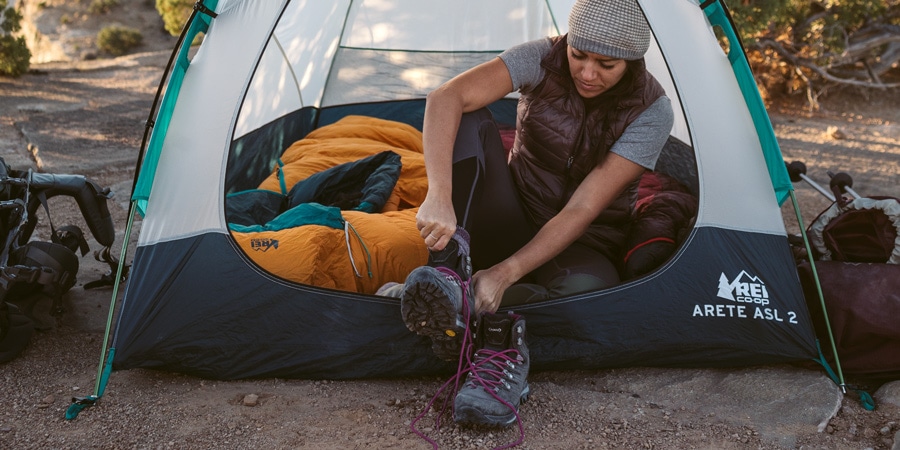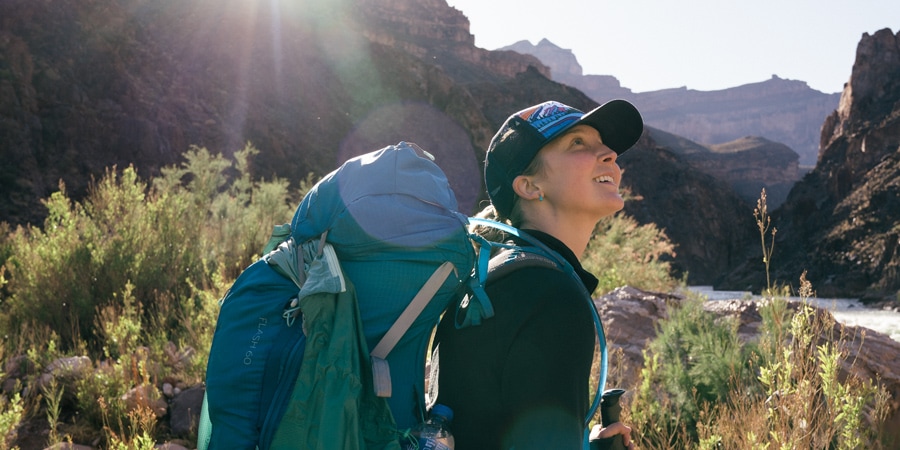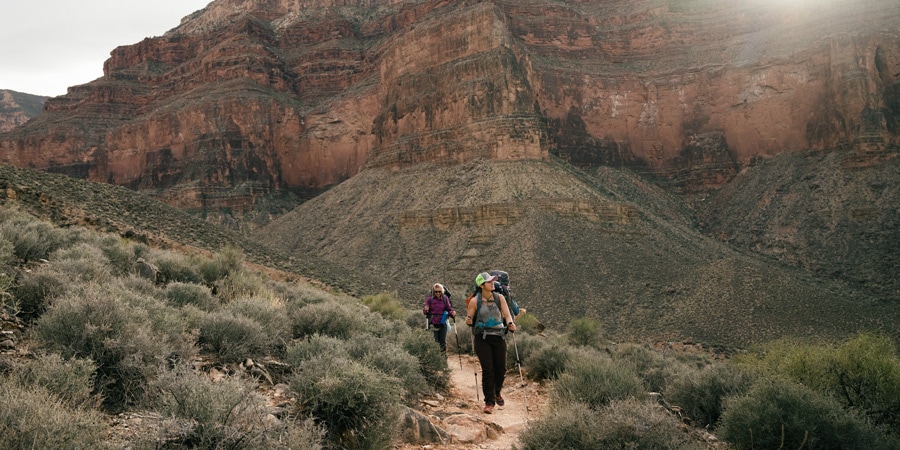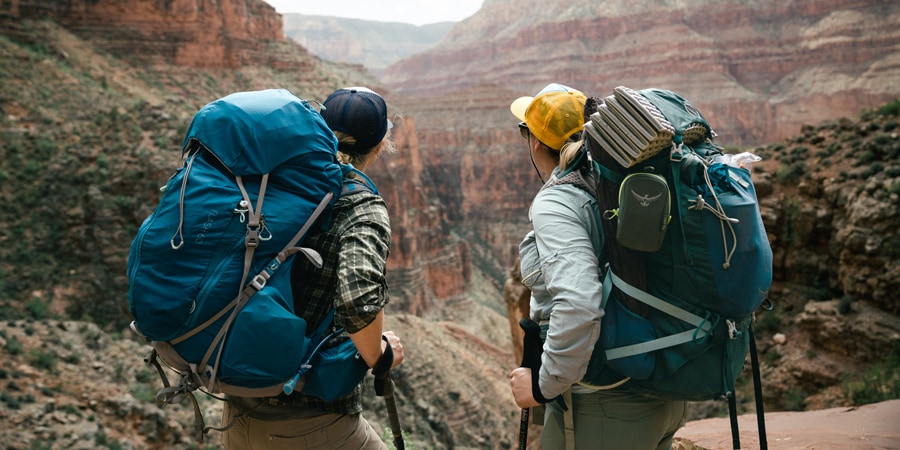Women make awesome backpackers because we're well-equipped biologically and physically: We're built for endurance, have high pain tolerance, store fat better than men, are stronger in the hips (which is great for carrying packs), and are more in tune with our bodies so we know when to rest. And, women excel at creating community on the trail, at supporting each other.
— Liz Meschio, REI Outdoor School instructor
There are more people backpacking today than ever before. And the jump in number of hikers, especially women, shows no signs of abating anytime soon. Whatever motivates us to hit the trail, most find our backpacking experiences to be empowering, soul-enriching, even life-changing. Whether we hit the trail solo or with others, for a single weekend or for months on end, the ability to carry what we need on our back in order to commune with nature, and with other outdoor enthusiasts we meet on the trail, is simply unmatched in other aspects of life.
If you're young or old, a first-timer or veteran hiker, you'll find inspiration from other backpacking enthusiasts. Following are some suggestions to help you prepare for your next trip. Many of these tips apply to any gender.
If you've never been backpacking before, or need a refresher on the basics, be sure to read our article on Backpacking for Beginners.
Gear Considerations

Regardless of your gender, of course you need to make sure you have the right gear to head into the backcountry, including the Ten Essentials. That also means the following:
Make sure your gear fits and works properly: Make sure your pack is comfortable, you know how to set up your tent, you have a quality sleeping bag and pad, and you know how your stove and water filter work. Bring along repair supplies for the above. Some may find that "women-specific" options for backpacks and sleeping bags may provide a more comfortable fit and better performance than unisex or men's styles.
Check that you have appropriate clothing and footwear: Make sure you have clothing appropriate for the weather and your destination. Fast-drying underwear is of particular note because it helps prevent yeast and urinary tract infections for those who are prone to them. Also, be sure your boots and feet are comfortable. For more tips, see our articles on how to choose backpacking clothes and how to choose hiking boots.
Take along some helpful hygiene items for comfort: In addition to basics like hand sanitizer and personal wipes, you might consider some of these specific gear considerations for hygiene.
- Menstrual supplies: Many backpackerslike to use a menstrual cup because it reduces the extra weight of carrying tampons and it cuts waste. It's a good idea to carry a "go kit," an ultralight stuff sack or dry bag that holds your clean supplies along with a separate sealed bag for waste. For more information, see our article, Backpacking With Your Period.
- Pee funnel: Planning to backpack in cold or rainy weather? A specially designed funnel lets you keep your pants on and stand up to pee; and, with practice, you can use it in your tent at night with a bottle.
- Pee rag: Some suggest using a cotton bandana instead of toilet paper when you pee. Tie it to the outside of your pack to dry in the sun. Rinse it as often as you can.
Don't forget to bring safety items:
- Safety whistle: This can be a deterrent to animals and humans as well as a way to call for help.
- Bear spray: This could come in handy for bear attacks (or human interactions if warranted).
- If you're traveling solo or to very remote locations, you might also consider carrying a personal locator beacon (PLB) with satellite messaging so you can send an "I'm fine" message once a day (or at a pre-established date and time) and so you can send an SOS if something serious happens. Also, before you go, always leave your detailed itinerary with someone you trust.
Mental Preparation

Remember that knowledge is power, so before your trip, do your research and make a mental plan for how you will deal with the following possible scenarios:
Be ready if you encounter uncomfortable human interactions: The people who go out on trails for long distances tend to be friendly, helpful and generous. That's not to say unfortunate things can't happen. Here are some tips to help you feel prepared to avoid and deal with dodgy situations:
- Avoid camping within one mile of a road or trailhead. Stick to camping in established campsites.
- Avoid camping on or near a game trail. You don't want animals—or hunters—literally running into you.
- Trust your gut. If you meet someone you feel uneasy about, don't feel you have to answer questions about where you're heading, camping, etc. Feel free to make up an excuse to leave them. Tell them you have to make your miles that day, or are getting an attack of giardia—so goodbye! Stride off confidently.
- Consider carrying a can of pepper spray that's designated for personal self-defense.
- Don't hesitate to use your safety whistle. Three blasts is the universal call for help.
Know what to do when you encounter wild animals: Are there bears and cougars where you'll be hiking? Learn how to store your food using bear-proof methods and what to do if you encounter a threatening animal. Definitely carry a can of bear spray if you'll be in bear territory, and hike in a group of three to four or more. See our articles on Backpacking in Bear Country, Food Storage Basics and Bear Canister Basics for more information.
For smaller potential hazards, such as snakes, again, find out if any poisonous species may be found where you're going, how to identify them, how to avoid them, and what to do if you encounter or get bitten by one.
Know how to avoid getting lost and deal with possible injury: Carry a detailed topo map, GPS and compass and know how to use them to avoid getting lost in the first place. See our articles about reading a topo map and how to use a compass. On a long-distance trail, know ahead of time where your "escape" routes are to civilization if you get sick or hurt and need to cut your trek short. Chances are, if you're on a well-traveled trail, someone will stop to help.
Embrace the solitude: Being alone for days on end can be a challenge—and also empowering. You'll solve your own problems and make your own decisions without input from others. If you prefer to backpack with someone else, especially as a newbie, find a partner through your own group of friends or local hiking clubs. If you're solo on the trail, help create a community of other solo hikers. And then there's the tried and true companion, if your route allows: a dog.
Physical Preparation

Get prepared physically: Spending multiple days hauling a pack weighing 30 or more pounds up and down uneven terrain will challenge you in countless ways. From head to toe, you'll need strength coupled with a solid level of cardiovascular fitness. An ideal pre-trip training plan includes the following:
- Cardio workouts (hiking, cycling, elliptical training, etc.),
- Training hikes with a weighted backpack (increase weight and distance over time to build stamina)
- Resistance workouts to build strength and stability
Also, before tackling a long-distance trail, practice short trips of at least a couple days.
For a suggested training plan, read our article, Backpacking: Training Tips and Exercises.

